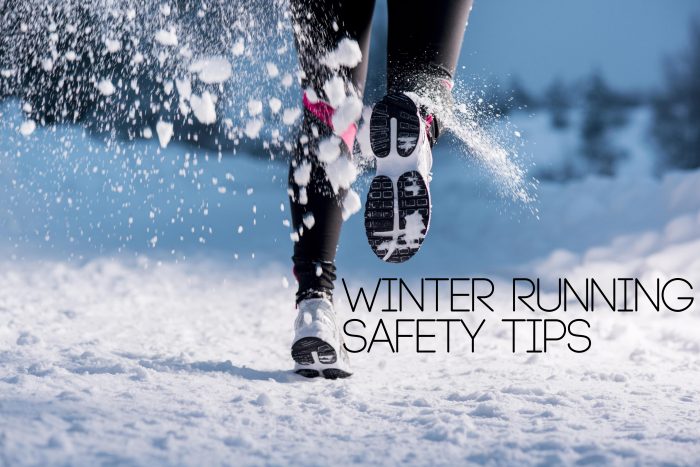Winter Running Safety Tips

It takes determination to run during the winter. When it’s frigid outside, most of us would rather stay bundled up in the heated indoors. For those of you with a New Year’s Resolution to get in shape, you may need to bare the cold and take a jog outside. Once you get adjusted to the temperature, keeping active in the cold weather can help protect you from seasonal depression and keep you in shape.
Exercising in cold weather can benefit your health in more ways than one.
- A little Vitamin D exposure can help defeat winter blues.
- Your body will produce endorphins as it fights to stay warm.
- When it’s cold, it becomes more strenuous work for your heart to distribute blood throughout your body, which can strengthen your heart muscle. (However, if you have heart problems, this can negatively impact your heart health.)
- More calories will be burned during an outdoor workout. This is because your body is working harder to maintain its core temperature.
You must prepare yourself to face the elements before you can reap the benefits. The following tips will help you prepare for your winter jog.
- Dress in layers. The first layer should be a synthetic material, such as polyester. Avoid wearing cotton. Polyester is light, breathable, and non-absorbent. If the temperature is cold enough, add an insulating layer, like fleece. You’ll only need an insulating layer if that temperature is below 10 degrees. Then, wear a wind/waterproof layer, such as nylon. As a rule of thumb, dress as if it’s much warmer than it is–once you start running, your body will warm up pretty quickly.
- Avoid running outside if the weather is below 0, or if the windchill hits negative temperatures.
- Wear a pair of wool socks and running gloves to keep your hands and feet warm. Our hands and feet lose heat quickly because the body is designed to keep our vital organs warm first. In cold temperatures, there is a reduction of blood flow through our feet and hands.
- In cold temperatures, our muscles tighten up more. This increases the risk of pulling a muscle while running outside in cold weather. Be aware of this, and try to take it easy on yourself during outdoor winter workouts.
- If you get wet, head home and change your clothes immediately. Wet clothes, cold weather, and wind do not mix well. These conditions lead to an increase in risk of hypothermia.
- Stay hydrated.
- Try to go on your runs when it’s daylight. Avoid running during sunrise or sunset, when the temperature is cold and it’s dark outside.
Do you have questions about your insurance? Find an insurance agent near you with our Agent Finder
Search All Blogs
Search All Blogs
Read More Blogs
The Scent of the Moment: The Rise of Personal Scent and the Art of Fragrance Layering
Tired of smelling like everyone else? Discover how to create your own unique personal scent with fragrance layering.
The Resilient Enterprise: Business Insurance for a Cyber and Hybrid 2026
Cyber threats and a hybrid workforce are changing business insurance. Protect your company in 2026 with the right coverage.
Life Insurance, Not Just a Death Wish: The 2026 Financial Planning Essential
Life insurance is now a living financial tool. This guide shows how modern policies can help you build wealth and plan for the future.
Driving into 2026: Why Your Car’s Tech is Changing Your Auto Insurance
EVs and smart cars are changing insurance. Learn how new tech is affecting your rates and how to get the best deal in 2026.
2026 Home Insurance Outlook: Navigating a Stabilizing, but Still Volatile, Market
Home insurance rates are moderating, but risks remain. Prepare for 2026 with this guide on market trends and policy tips.
Digital Detox: Unplugging from the Matrix in an Always-On World
Feeling overwhelmed by screens? Learn how to do a digital detox and reclaim your life from constant connectivity.
Future-Proofing Your Enterprise: The 2026 Guide to Business Insurance
Cyber threats and remote work are changing business insurance. This guide shows how to protect your company in 2026.
Beyond the Black and White: The New Reality of Life Insurance in 2026
Life insurance is evolving. Learn how new policies are becoming flexible financial tools for families in 2026.
The Road Ahead: Navigating Auto Insurance in a World of EVs and Smart Cars
EVs and smart cars are changing auto insurance. This guide explains new coverage needs and how to save money in 2026.
Your Home, Your Haven: The 2026 Home Insurance Playbook
Navigating home insurance in 2026? This guide covers new trends, smart home tech, and essential tips to protect your property.










